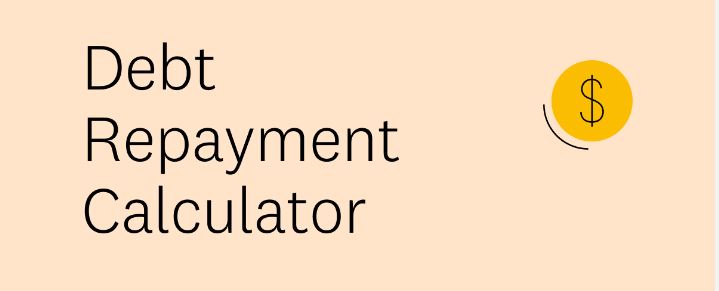Drowning in debt isn’t just a financial burden—it’s an emotional weight that affects every aspect of your life. With the average American carrying $103,358 in total debt, finding an effective path to financial freedom has never been more crucial.
The good news? Using a debt repayment calculator strategically can help you eliminate debt twice as fast as traditional methods.
In this comprehensive guide, you’ll discover how to leverage debt repayment calculators to transform your financial future, create an actionable plan, and accelerate your journey to becoming debt-free.
Skale Money Key Takeaways
- Learn to use debt repayment calculators to cut your debt payoff time in half
- Discover advanced strategies for maximizing your debt repayment efforts
- Understand how to avoid common calculator mistakes
- Access proven templates and tools for tracking progress
- Get expert insights on combining different debt reduction methods
Table of Contents
Understanding Debt Repayment Calculators: Your Financial GPS
A debt repayment calculator is more than just a number-crunching tool—it’s your personal financial GPS that maps the fastest route to debt freedom.
These calculators analyze your debt details, interest rates, and payment capabilities to create a structured repayment plan that optimizes every dollar you put toward debt.
Types of Debt Repayment Calculators:
- Basic Calculators: Simple tools for single debt calculations
- Avalanche Method Calculators: Focus on highest interest rates first
- Snowball Method Calculators: Organize debts from smallest to largest
- All-in-one Debt Management Tools: Comprehensive planning with multiple features
| Calculator Type | Best For | Key Features | Limitations |
| Basic | Single debt analysis | Simple interface, quick results | Limited functionality |
| Avalanche | Maximum interest savings | Interest rate optimization | More complex to use |
| Snowball | Motivation and quick wins | Progress tracking | May cost more in interest |
| All-in-one | Complete debt management | Multiple calculation methods | May require subscription |
Gathering Your Financial Data: What You Need Before Starting
Before diving into calculations, you need a clear picture of your financial situation. Think of this as creating a financial snapshot—it’s impossible to reach your destination without knowing your starting point.
Essential Information Checklist:
- Complete list of all debts and balances
- Current interest rates for each debt
- Minimum monthly payments required
- Additional funds available for debt repayment
- Monthly income and expense breakdown
| Debt Type | Current Balance | Interest Rate | Minimum Payment |
| Credit Card 1 | $ | % | $ |
| Credit Card 2 | $ | % | $ |
| Personal Loan | $ | % | $ |
| Student Loan | $ | % | $ |
| Auto Loan | $ | % | $ |
How to Use a Debt Repayment Calculator Effectively
Making the most of your debt repayment calculator requires understanding how to input data accurately and interpret results meaningfully. This knowledge transforms a simple calculator into a powerful debt elimination tool.
Step-by-Step Guide:
- Input each debt’s current balance, interest rate, and minimum payment
- Add any extra monthly money available for debt repayment
- Review the generated payment schedule
- Experiment with different payment amounts
- Save or print your repayment plan
Pro Tip: Always round up your minimum payments and include any annual fees or additional charges in your calculations.
The Psychology of Debt Repayment: Making Your Calculator Work Harder
Success in debt repayment is 80% psychology and 20% mechanics. Understanding the mental aspects of debt repayment helps you stay committed to your calculator-generated plan.
Key Psychological Factors:
- Visualization: See your debt-free date to stay motivated
- Progress Tracking: Regular updates maintain momentum
- Small Wins: Celebrate milestone achievements
- Accountability: Share goals with trusted friends or family
Success Story: Sarah’s Journey Sarah used a debt repayment calculator to tackle $45,000 in debt. By visualizing her progress and tracking monthly improvements, she stayed motivated and debt-free in just 2.5 years—half the time she initially expected.
Advanced Strategies to Accelerate Your Debt Repayment
Once you’ve mastered basic calculator usage, these advanced strategies can help you accelerate your debt repayment significantly.
Strategic Approaches:
- Make bi-weekly instead of monthly payments
- Apply work bonuses strategically
- Use cash windfalls effectively
- Implement the “dollar-up” method
| Strategy | Time Saved | Interest Saved | Effort Level |
| Bi-weekly Payments | 4-8 months | 15-20% | Low |
| Extra Payment | 1-3 years | 25-30% | Medium |
| Rate Negotiation | 6-12 months | 10-15% | High |
| Income Allocation | 2-4 years | 30-40% | Medium |
Common Mistakes to Avoid When Using Debt Repayment Calculators
Even small errors in calculator usage can lead to significant differences in your debt repayment timeline.
Critical Mistakes to Avoid:
- Excluding fees and additional charges
- Forgetting about variable interest rates
- Not updating calculations regularly
- Setting unrealistic payment goals
- Ignoring emergency fund needs
Warning: Always include a buffer in your calculations for unexpected expenses or interest rate changes.
Combining Calculator Insights with Debt Reduction Methods
Your debt repayment calculator becomes even more powerful when combined with proven debt reduction strategies.
Integration Strategies:
- Use calculator results to choose between snowball and avalanche methods
- Identify high-impact debt for balance transfer opportunities
- Calculate savings from debt consolidation
- Track progress across multiple methods
Creating Your Personal Debt Freedom Plan
Transform calculator insights into actionable steps with a personalized debt freedom plan.
Action Steps:
- Set specific monthly payment goals
- Create a realistic timeline
- Establish tracking systems
- Plan for setbacks and adjustments
Monthly Progress Tracking Template:
- Starting Balance
- Monthly Payment Made
- Interest Paid
- Principal Reduced
- Remaining Balance
- Days to Debt Freedom
Tools and Resources to Support Your Journey
Complement your debt repayment calculator with these additional resources for maximum success.
Recommended Tools:
- Budget tracking apps
- Automated payment systems
- Credit monitoring services
- Financial education resources
Conclusion
A debt repayment calculator is your most powerful ally in the journey to financial freedom. By following this guide and implementing these strategies consistently, you can join the growing number of people who have cut their debt repayment time in half.
Remember, every dollar optimized through your calculator brings you one step closer to financial independence.
Take action today: Input your numbers into a debt repayment calculator, create your plan, and take the first step toward a debt-free future.
Frequently Asked Questions
How accurate are debt repayment calculators?
Debt repayment calculators are highly accurate when provided with correct information and regular updates. However, they work best as planning tools rather than exact predictions.
Should I include my mortgage in debt calculations?
While you can include your mortgage, it’s often better to focus on high-interest debts first. Use separate calculators for mortgage planning.
What if my income varies month to month?
Use your base income for initial calculations and treat additional income as extra payments. This ensures a consistent minimum payment plan.
How often should I update my calculations?
Review and update your calculations monthly, or whenever there’s a significant change in your financial situation.
Can I trust free calculators?
Many free calculators are reliable. Focus on those provided by reputable financial institutions or well-known personal finance websites.
What if I have variable interest rates?
Use the current rate for initial planning, but recalculate quarterly or when rates change significantly. Always include a buffer in your planning.
Expert Tips:
- Start with small wins to build momentum
- Keep emergency savings while paying off debt
- Consider credit counseling for complex situations
- Review your progress monthly
- Celebrate milestones along the way
![]()




